Wet vs dry cat food is one of the most debated topics among cat owners. As a loving cat parent, you want to give your furry friend the best nutrition possible, but with so many pet food brands and opinions out there, it’s easy to feel confused. Should you choose crunchy kibble, juicy canned food, or a mix of both?
This article provides a complete guide to wet vs dry cat food in 2026, helping you understand which option supports your cat’s health, nutrition, and lifestyle best.
In 2026, veterinarians continue to emphasize that the healthiest choice often depends on your cat’s age, lifestyle, and health conditions. This guide breaks down everything you need to know about wet and dry cat food, including pros, cons, nutrition, feeding tips, and a clear comparison to help you decide.
What Is Dry Cat Food?
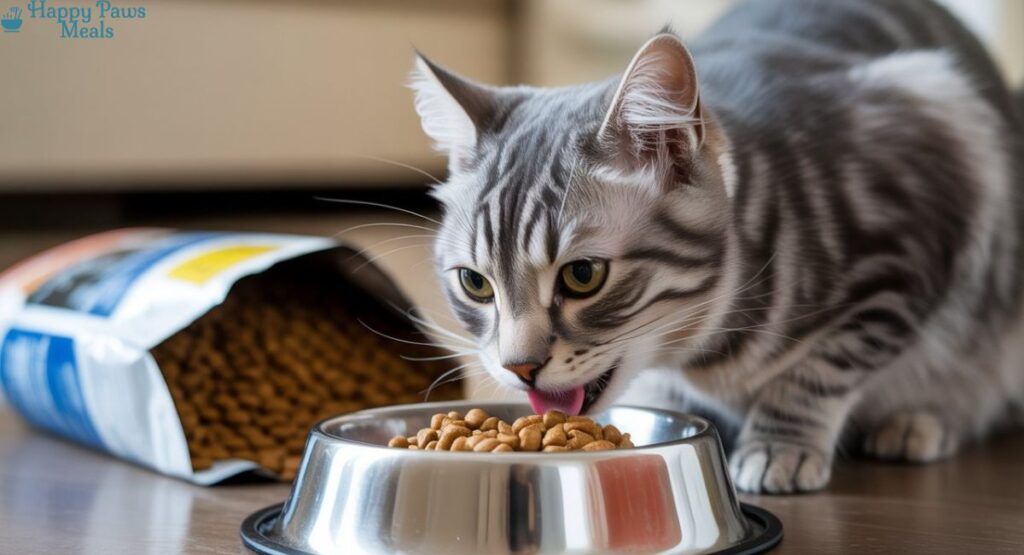
Dry cat food, also called kibble, remains the most popular choice in American households. It’s known for convenience, affordability, and long shelf life, making it easy for busy pet parents.
When comparing wet vs dry cat food, many cat parents choose kibble for its convenience and affordability, especially in multi-cat households.
✅ Pros of Dry Cat Food (Kibble):
- Easy to store and serve
- Helps reduce plaque and tartar buildup
- More budget-friendly than wet food
- Can be left out for cats who prefer free-feeding
❌ Cons of Dry Cat Food:
- Lower moisture content (risk of dehydration if cats don’t drink enough water)
- Some brands use fillers, preservatives, or artificial flavors
- Not always ideal for cats with kidney or urinary issues
👉 If you choose dry food, always pair it with fresh water to keep your cat hydrated.
What Is Wet Cat Food?
Wet cat food is usually sold in cans or pouches and contains 70–80% moisture, making it highly beneficial for cats who naturally have a low thirst drive.
One major advantage in the wet vs dry cat food debate is hydration—wet food naturally provides more water, which is essential for urinary health.
✅ Pros of Wet Cat Food:
- High water content supports urinary tract and kidney health
- Soft texture, perfect for kittens, senior cats, or cats with dental issues
- Strong aroma and flavor (more appealing for picky eaters)
- Lower calorie density, which may help with weight management
❌ Cons of Wet Cat Food:
- More expensive compared to dry kibble
- Must be refrigerated after opening (short shelf life)
- Can be a bit messy during serving
👉 Wet cat food is particularly useful for cats with sensitive stomachs, urinary problems, or picky appetites.
Nutritional Comparison: Wet vs Dry Cat Food
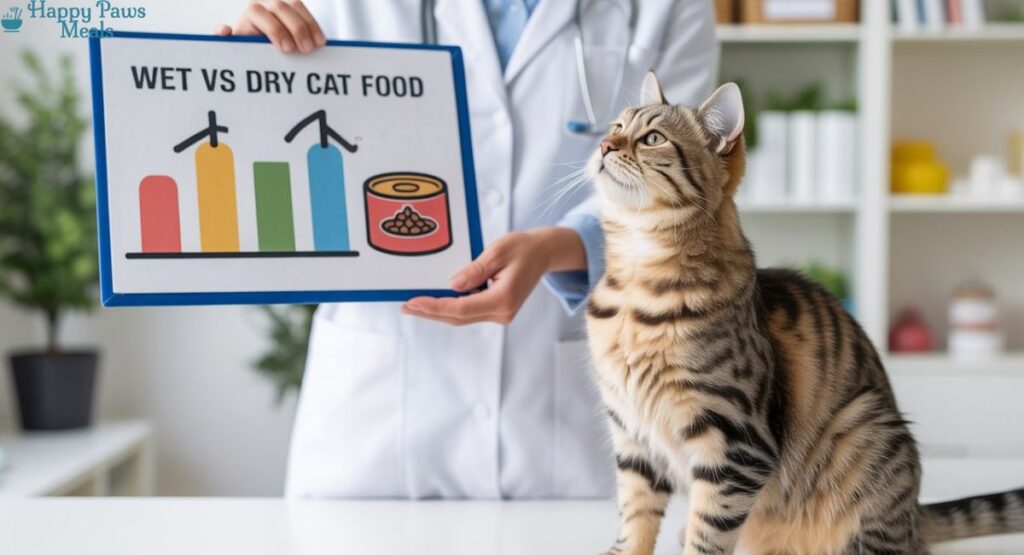
| Aspect | Dry Cat Food (Kibble) | Wet Cat Food (Canned/Pouch) |
|---|---|---|
| Moisture | 10–12% | 70–80% |
| Shelf Life | Long (months unopened) | Short (once opened) |
| Cost (USA) | $15–$25 per 10 lbs | $25–$40 per case (24 cans) |
| Dental Health | Helps reduce tartar | Doesn’t clean teeth |
| Palatability | Moderate | Very high |
| Best For | Busy owners, multiple cats | Cats needing hydration, picky eaters |
📌 Quick Tip: Some premium brands now offer semi-moist or freeze-dried raw blends, giving cats the benefits of both formats.
Which Is Healthier in 2026?
The truth about wet vs dry cat food is that neither is perfect on its own. The healthiest approach often lies in balancing the two, based on your cat’s needs.
There’s no single answer—the healthier option depends on your cat’s needs.
- Kittens → Thrive on wet food thanks to high protein and soft texture.
- Adult Cats → Benefit from a mixed diet (wet + dry) for balance.
- Senior Cats → Do better with wet food due to easier chewing and hydration.
- Cats with Health Issues → Wet food is often recommended for urinary, kidney, or digestive concerns.
👉 In 2026, veterinarians often recommend a combination diet. A mix of 50/50 or 70/30 (wet/dry) offers hydration, convenience, and complete nutrition.
Feeding Tips for Cat Owners
- Always provide fresh, clean water alongside dry kibble.
- Mix wet and dry cat food to balance cost, nutrition, and hydration.
- Switch foods gradually to avoid upsetting your cat’s stomach.
- Read labels carefully: choose brands that list real meat as the first ingredient.
- Avoid brands with too many fillers like corn, soy, or artificial additives.
Check out our guide on Best Dry Cat Food Brands for 2026.”
Expert Opinions: What Do Vets Say?
Veterinarians highlight that cats are obligate carnivores. They thrive best on diets rich in animal protein and moisture. While kibble is convenient, feeding wet food daily (even in small amounts) helps prevent dehydration-related issues like urinary tract infections and kidney disease.
Some vets even recommend supplementing dry kibble with homemade raw diets or freeze-dried options, but only under guidance to avoid nutrient imbalances.
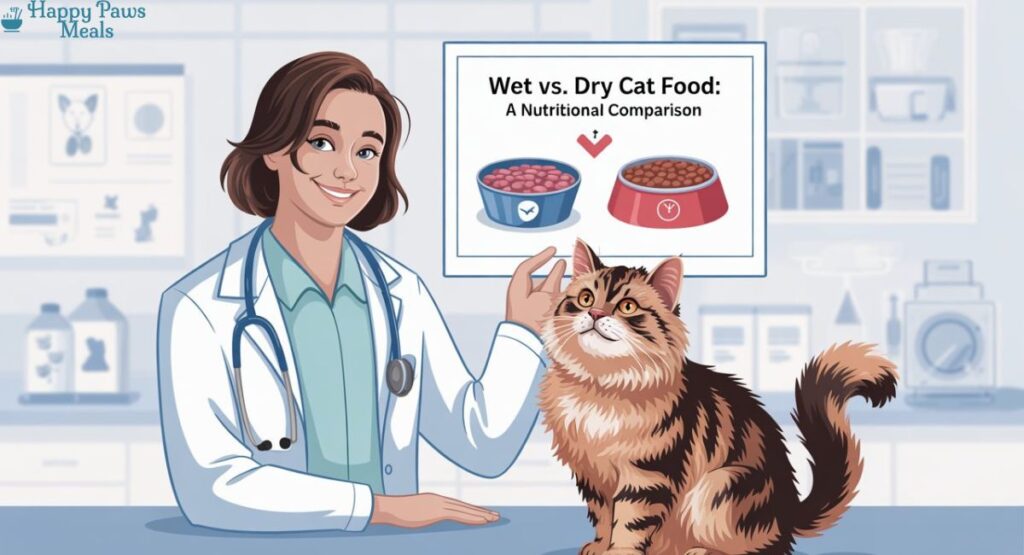
When choosing between wet and dry cat food, it’s also worth thinking about the environment. Wet food usually comes in small cans, pouches, or trays, which create more packaging waste and require extra energy for production and recycling. Dry food, on the other hand, is typically sold in larger bags that last longer and use less material overall. For eco-conscious pet parents, this makes dry food a more sustainable choice.
However, many brands in 2026 are now working on recyclable wet food packaging to reduce their footprint, so checking for eco-friendly labels can make a difference.
Cost Considerations: Wet vs Dry Cat Food
Budget plays a big role in choosing cat food. While dry food is generally more affordable for multi-cat households, wet food provides health benefits that may save money on vet bills long-term. Pet parents researching wet vs dry cat food often wonder which provides better nutrition, cost savings, and long-term health benefits. Veterinarians in 2026 continue to highlight wet vs dry cat food comparisons when advising cat owners on hydration, weight control, and digestive health.
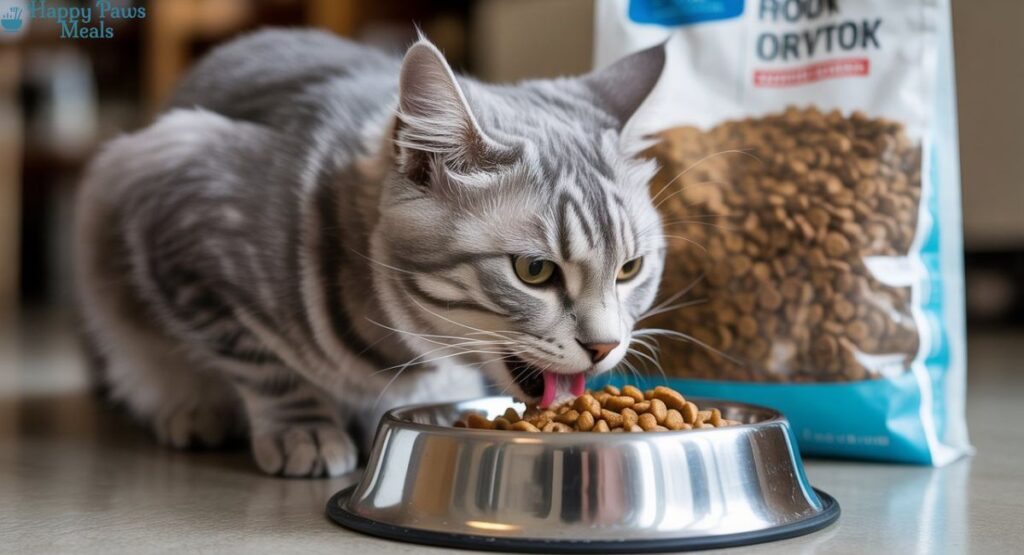
On average (USA, 2026):
- Dry Food → $15–$25 per 10 lb bag (lasts 4–6 weeks for one cat)
- Wet Food → $25–$40 for 24 cans (lasts ~2 weeks for one cat if fed exclusively)
👉 Many cat parents choose mixed feeding to balance cost and nutrition.
FAQs About Wet vs Dry Cat Food
Q1: Can I feed only dry cat food?
Yes, but ensure your cat drinks enough water. Dehydration can lead to urinary problems.
Q2: Can I feed only wet cat food?
Yes, but it’s more expensive and less convenient if you own multiple cats.
Q3: What’s the best ratio of wet to dry cat food?
Many vets recommend 50/50 or 70/30 depending on your cat’s age and health.
Q4: Is wet food better for cats with kidney disease?
Yes, wet food supports hydration and reduces kidney strain.
Q5: Do cats get bored of eating the same food?
Yes. Rotating flavors and mixing wet with dry keeps cats interested.
Conclusion
When it comes to wet vs dry cat food in 2026, there’s no one-size-fits-all answer. Dry food is convenient and cost-effective, while wet food provides hydration and palatability. For most cats, the healthiest approach is a balanced combination of both, tailored to their age, health, and lifestyle. Ultimately, the wet vs dry cat food choice depends on your cat’s age, health conditions, and your feeding routine. By combining both, you’ll provide the best nutrition in 2026.
By understanding the pros, cons, and nutritional differences, you can confidently choose the best diet for your feline friend—ensuring a longer, healthier, and happier life. 🐾

I’m Awais Manzoor, the writer behind HappyPawsMeals. With years of interest in pet care and nutrition, I research and review cat and dog food to provide reliable, easy-to-understand advice for pet parents.

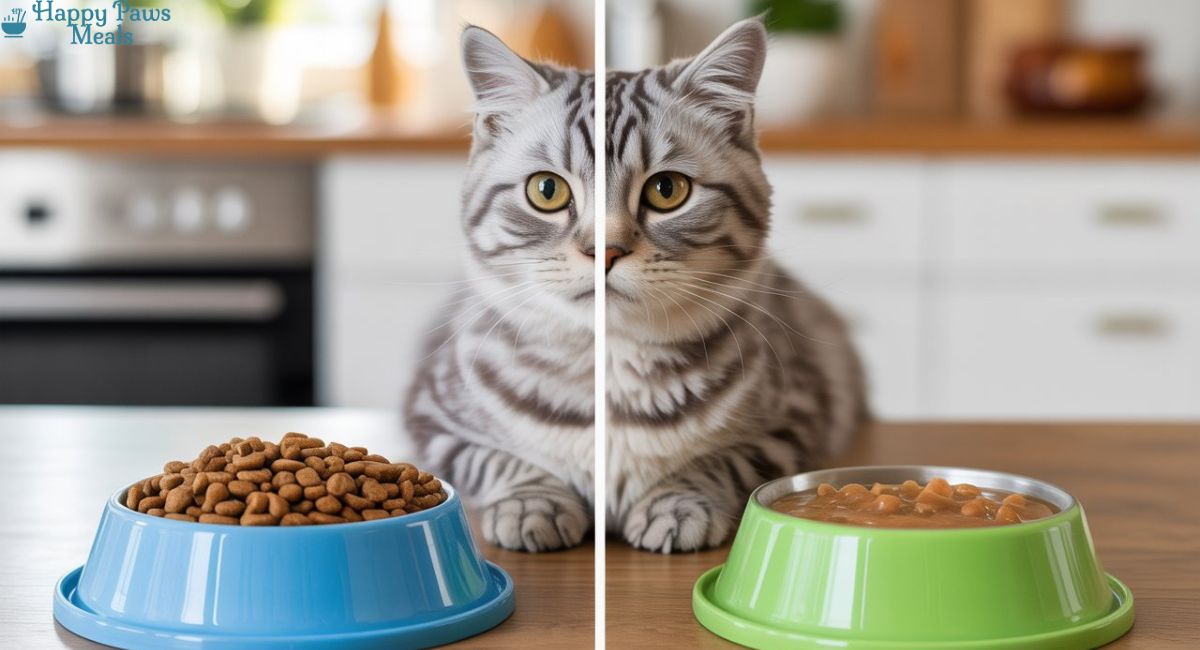
2 thoughts on “Wet vs Dry Cat Food: The Ultimate Healthy Choice for Your Cat in 2026”